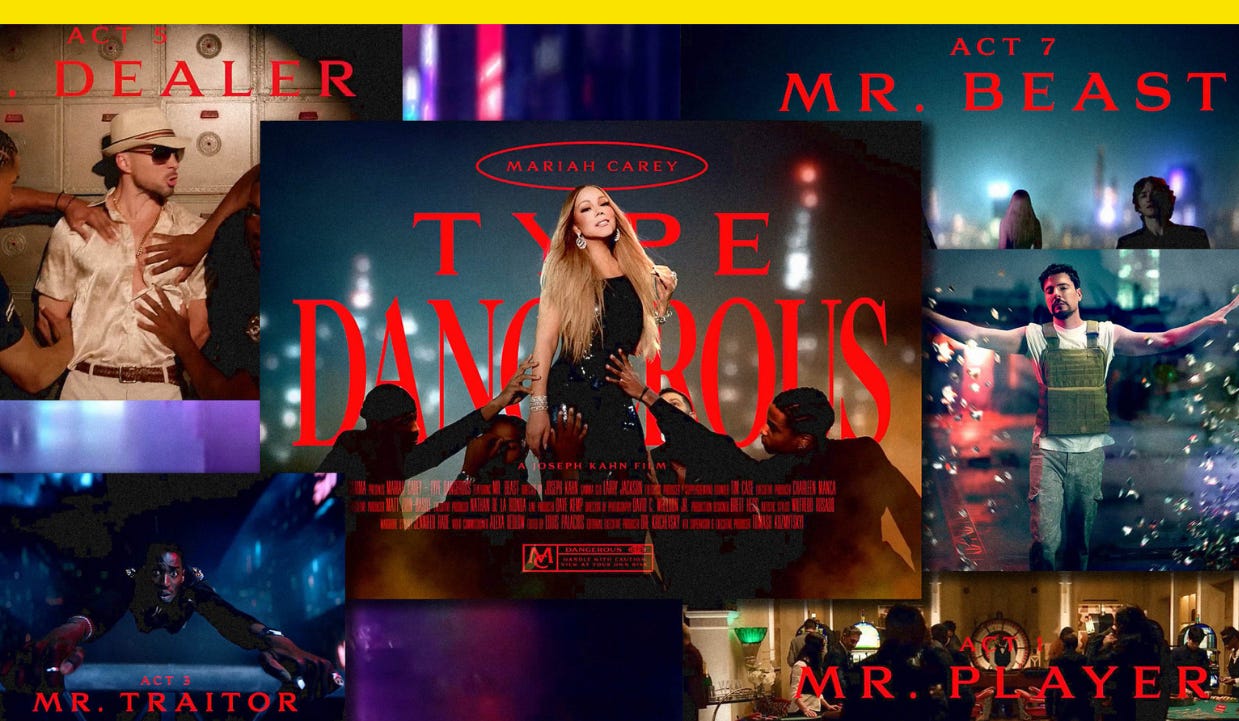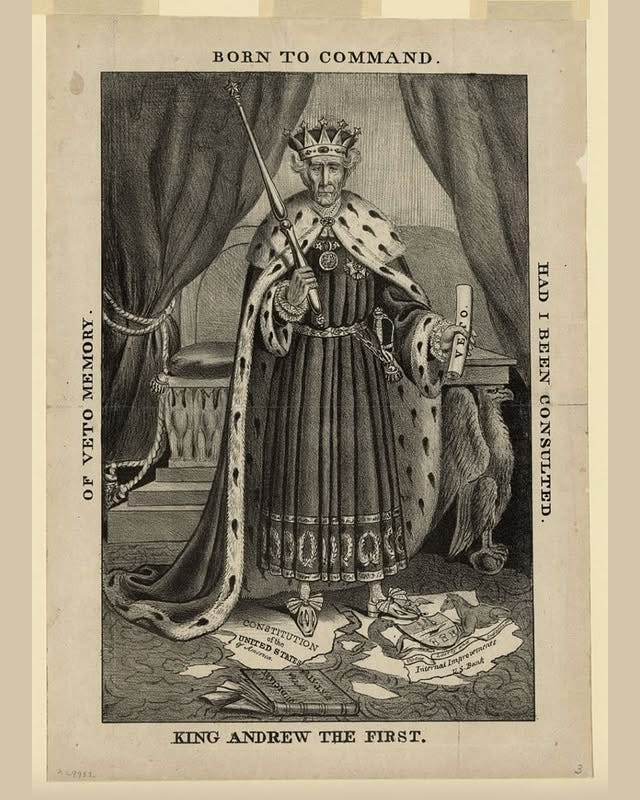Sorry, cons, the Revolution is liberal now
Plus: Mariah Carey changed her font in her new music video but you might not notice
Sorry, cons, the Revolution is liberal now

If you start seeing Gadsden flag decals next to the Human Rights Campaign equal signs on Prius bumpers or electric Ford F-150 Lightning pickup trucks soon, know you can trace the rise of a Patriot-inspired aesthetic on the left to President Donald Trump’s 79th birthday.
Saturday’s No Kings protests against Trump was a coming out party for the sort of Resistance you remember from his first term. Organizers said more than 5 million protesters attended protests in more than 2,100 cities and towns, and sarcastic, self-aware signs are back, with slogans like “It's So Bad Even The Introverts Are Out,” “If Kamala Was President We'd Be at Brunch Right Now,” and “Too Many Issues For One Sign” at demonstrations across the country.
But there was also a noticeable use of Revolutionary War-era symbols that for more than a decade-and-a-half have been associated with the right. Say hello to the Democratic Revolutionary Revival.
The Tea Party movement began in 2009 as a response against then-President Barack Obama’s housing bailout proposal, and at early protests, like one held near the site of the actual Boston Tea Party, some attendees dressed up in Revolutionary War cosplay, tricorn hats and all. It was the birth of a conservative Tea Party Patriot aesthetic, and Revolutionary War symbolism proliferated on the right. Think Constitution polos and t-shirts with a U.S. flag on the sleeve and “If I Charge, Follow Me, If I Retreat, Kill Me, If I Die, Avenge” on the back worn in the Target toy aisle.
What pussyhats and “In This House We…” yard signs would become for anti-Trumpism eight years later, Tea Party Patriot was to anti-Obamaism, a visual form of resistance. It was unapologetic, loud, and proud to be an American. Iconography like the “Don’t Tread One Me” Gadsden snake, the original 13-star Betsy Ross flag, and Constitution-style script “We The People” typography became especially right coded, and in some cases associated with right-wing extremism.
Alongside QAnon and Confederate symbolism, rioters during the attack at the U.S. Capitol on Jan. 6, 2021 wore “1776” apparel and symbols for the Three Percenters, a paramilitary group named after a debunked claim that just 3% of the American colonists fought the British. The shifting political meaning of historical symbols can be best illustrated by Nike, which canceled the planned Independence Day release of Air Max 1 Quick Strikes with the 13-star flag on the back in 2019 after Colin Kaepernick criticized the design.
Today, though, there’s a new liberal equivalent to the conservative Tea Party Patriot look that reclaims well-known Revolutionary War tropes from the right, like LARPing as a colonist and “1776,” except it’s now also compatible with drag-style wigs and Pride friendly.
A Boston art collective has used “Common Sense”-style fonts to project anti-Trump messages on historic buildings around the birthplace of the American Revolution, and protesters this weekend who dressed up like George and Martha Washington or carried signs with script “We The People” messages were referencing the same design heritage. With the 250th anniversary of the U.S. next year, Democratic Revolutionary Revival taps into history with a ready-made stand-in for King George who’s obsessed with gold, treats foreign policy like a family business, and had a parade on his birthday for the Army.
As a nation born of a war of independence from a monarchy, “king” has been used as a slur in the U.S. against presidents from Andrew Jackson (see today’s History of Political Design) to Obama. For Trump, though, it’s an especially pointed line of attack since his own administration played up the comparisons to a king. Trump’s pursuit of the unitary executive theory, or expanding executive authority beyond its checks and balances, betrays traditional conservative values about small government, but it also makes it easier for liberals to rally under the banner of “No Kings.”
1776core isn’t just for Republicans anymore.
Previously in Yello:
Chip in: Consider upgrading your subscription. You’ll help support this newsletter and get access to exclusive subscriber-only stories:
Mariah Carey changed her font in her new music video but you might not notice
YouTuber MrBeast made a brief cameo in the new music video for Mariah Carey’s song “Type Dangerous,” but it was a font that got more screen time.
The video is divided into seven acts named after different would-be paramours, like “Mr. Player,” “Mr. Danger,” and “Mr. Beast.” Each act is introduced with red, all-caps text set in Aviano Serif Black, a squat, geometric typeface with short, sharp serifs that was vertically lengthened by 130% for the video, the production company behind the video, Supply&Demand, tells me.
If it seems familiar, that’s because it looks a lot like the typography Carey has used throughout her career, starting with her 1990 self-titled debut album cover. But look closely at the serifs, and you’ll notice it’s not the exact same font.
Many artists switch up the typefaces they use to reflect an album’s theme. Carey, though, has stuck to similar typefaces throughout her discography, which dates back 35 years.
Carey’s primary typeface of choice is Friz Quadrata, an award-winning serif by type designer Ernst Friz released in 1966 that’s also used in the logos for Law & Order and Dr Pepper. Used consistently throughout her career and on best-selling albums like Daydream, Music Box, and The Emancipation of Mimi, Carey’s name written in all-caps has over time become as much a part of her brand as her high heels, dresses, and wind machines. Carey also has a monogrammed version of just an M and C. The logo mark is to divas what the Rolling Stones’s tongue and lips logo is to rock bands.
Though eagle-eyed viewers will notice differences in the letterform for letters like M and R, the customized, heightened Aviano Serif Black looks like a spitting image of Friz Quadrata in the “Type Dangerous” video, which was directed by Joseph Kahn (the director behind hit videos like Britney Spears’s “Toxic” and Taylor Swift’s “Bad Blood”). Like a brand refresh you don’t even notice happened, the font choice gives Carey’s video a new bespoke typeface that still looks familiar and classic.
Have you seen this?
For the first time, social media overtakes TV as Americans’ top news source. Social media has displaced television as the top way Americans get news for the first time, according to Oxford’s Reuters Institute for the Study of Journalism’s 2025 Digital News Report surveying nearly 100,000 people in 48 countries. [Nieman Lab]
MAGA’s plan to remake an iconic New York landmark. In 2021, Justin Shubow, the president of the non-profit National Civic Art Society, approached a team of supporters with a starry-eyed vision: Renovate New York City’s Penn Station according to a grand neoclassical design. “Classical architecture is the architecture of American democracy.” [Politico]
There’s going to be a Trump phone. More people showed up for protests against Trump than turned out for his birthday party, but if it’s any consolation, his company is releasing a smartphone and mobile phone service for some reason. [Whig]
History of political design
“King Andrew the First” (1833). This lithograph depicts Andrew Jackson in a crown and robe holding a scepter and scroll of paper labeled “Veto” while standing on a tattered U.S. Constitution. Captioned “Born To Command,” the caricature was likely made in reaction to Jackson ordering the removal of federal deposits from the Bank of the United States, according to the Library of Congress.
A portion of this newsletter was first published in Fast Company.
Like what you see? Subscribe for more:









